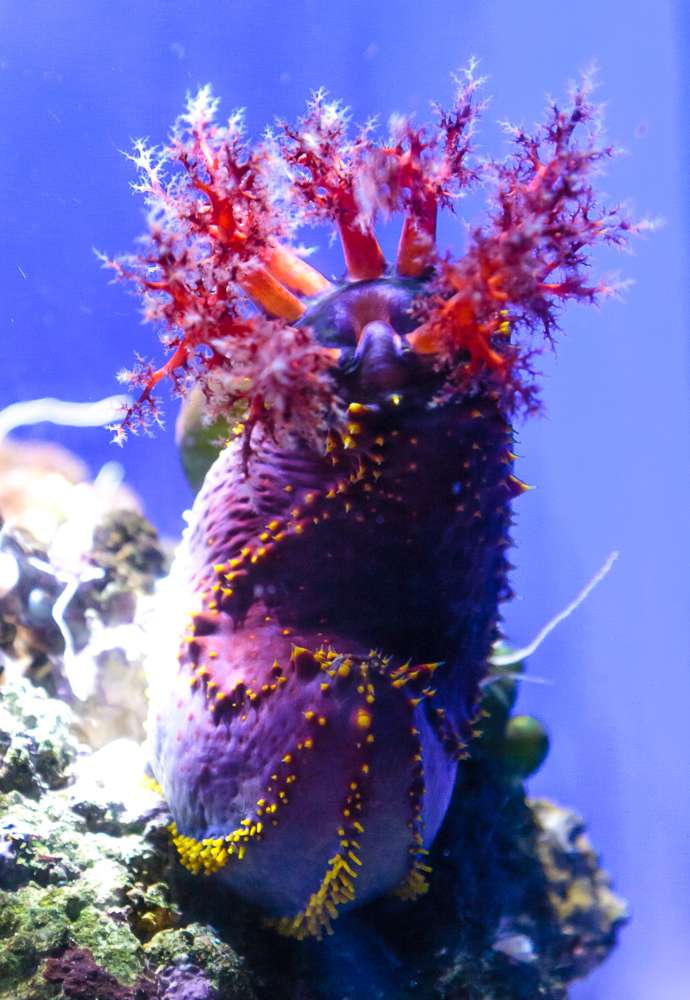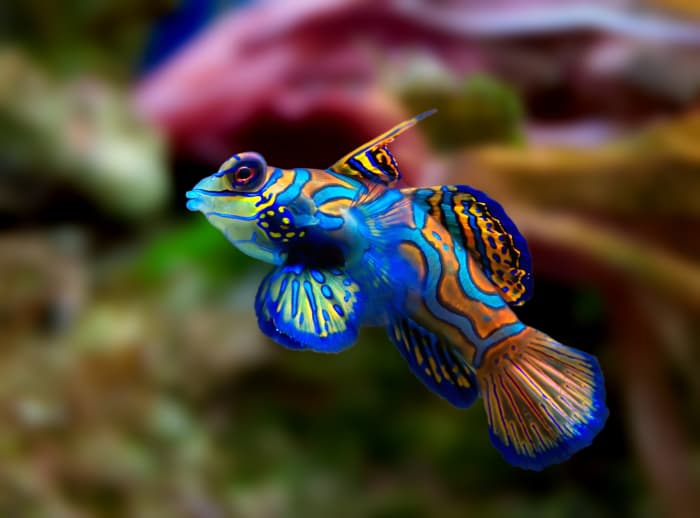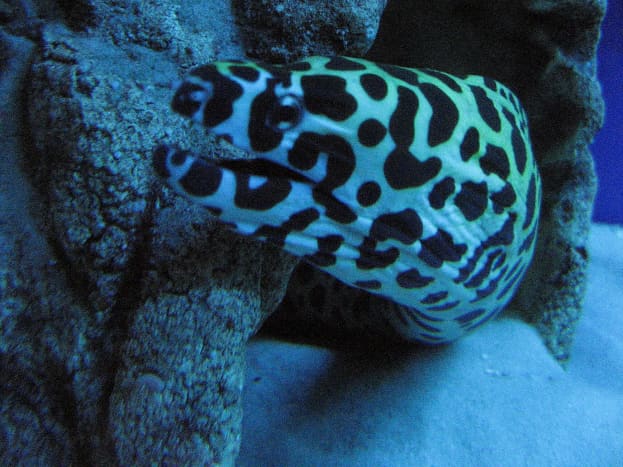10 of the Most Beautiful Sea Creatures in the World (With Honorable Mentions)
In the ocean, sea creatures are like artists, showing off lots of colors, shapes, and patterns. From pretty nudibranchs roaming on corals to brightly colored crabs, the underwater animal world is a captivating display of beauty. Let's explore the fascinating world of sea creatures and check out 10 of the most beautiful of them.
10 of the most beautiful sea creatures in the world:
- Nudibranch
- Rainbow octopus
- Sea apple
- Harlequin shrimps
- Mandarinfish
- Flashlight fish
- Moray eels
- Blue-ringed octopus
- Atlantic dancing shrimp
- Electric blue hermit crab





1. Nudibranch
Nudibranchs are sea mollusks that resemble slugs.They are known for their striking appearance due to their bright coloration and unique shapes. The coloration acts as warning to predators that they are toxic to consume. The soft spikes on the back, known as cerata, are their respiratory gills.
Nudibranchs exist from the shallow intertidal zone to the deep sea. They are carnivores that feed on sponges, corals, and even other nudibranchs. There are about 3000 species of nudibranchs distributed over the planet.
2. Rainbow Octopus
The rainbow blanket octopus is one of the world's most beautiful, interesting, and intelligent animals on the planet. The name derives from its iridescent, colorful, elongated webbing or "blanket" that connects some of its arms. The blanket helps the octopus against predators. When it feels in danger, this marine creature spreads these webs to look larger. If this defense does not work, it sheds these webs, confusing enemies and allowing it to escape safely. It will regrow new “blankets” later on.
Aside from the web, the rainbow blanket octopus uses a variety of defense mechanisms against predators. It produces ink like other octopuses do. It can also change color to camouflage into its environment. The most interesting one is that it is resistant to the deadly stings of the Portuguese man-of-war. It rips off the tentacles of these coelenterates and uses them as a whip to stun both of its predators and prey.
3. Sea Apple
The sea apples are a colorful marine invertebrate which belongs to the family of sea cucumber. The shape of the mauve bodies resemble an apple, hence the name. Like other sea cucumber, sea apples are filter feeders that use their feathery arm-like appendages to catch microorganisms in the water. Despite their beautiful appearance, sea apples are dangerous. They produce toxins, especially, when they feel stressed.
4. Harlequin Shrimps
The harlequin shrimp are beautiful marine creatures. They have a cream or white body with orange, blue, and brown spots and lines. These shrimps are found throughout the Indo-Pacific. They are relatively small and adults can grow about 2 inches (5 cm) long.
The harlequin shrimp are monogamous. Once they find a partner, the male and female stay together, these shrimps have unique feeding habits. They primarily prey on starfish. If starfish are not available, they may also feed on sea urchins.
Recommended
5. Mandarinfish
Mandarinfish is a beautiful coral fish that is naturally found in the Western Pacific, from the Philippine Islands to the Great Barrier Reef. Its body is brightly colored, with wavy patterns of blue, orange, black, green, violet, and yellow. This coloration serve as a warning to enemies that they are toxic.
The mandarinfish does not have scales, instead, the its skin produce toxic mucus that is used to deter enemies, parasites and other harmful organism.
6. Flashlight Fish
The flashlight fish, also known as lanterneye fish, are fascinating marine creatures known for their bioluminescent abilities. They are known for the blue-green glowing organs located beneath their eyes. The glow serves to attract and to "flashlight" their planktonic prey.
There are three recognized species of flashlight fish including, two-fin flashlight fish. The flashlight fish are found in the dark deep waters of the Indo-Pacific and Atlantic Oceans.



7. Moray Eels
Moray eels are any of the 200 serpent-like fish species in the Muraenidae family. The shapes, colors, and sizes of members of this family vary depending to species, but they all have elongated bodies. Moray eels lack pelvic and pectoral fins, giving them a serpent-like look. However, they have a dorsal fin that runs the entire length of their bodies. They do not have scales; instead, their skin produces a toxic mucus that protects them from unwelcome parasites and physical damage caused by their rocky habitat. These eels are frequently found in hiding places, ambushing prey such as other kind of fish and crustacean.
8. Blue-Ringed Octopus
The Blue-Ringed Octopus is a small but beautiful cephalopod. It just has an arm span of around 12 to 20 centimeters (5 to 8 inches). The body is yellowish or beige and covered in electric blue rings. When provoked, these rings intensify signaling to enemies about the presence of its toxic venom. The venom is produced by the salivary glands and has the potential to harm the victim's nervous system. In humans, the venom results in paralysis and respiratory failure.
The blue-ringed octopus is carnivorous, feeding on crustaceans such as crabs, and shrimps. They are found in the tide pools and shallow coral reefs of Indo-Pacific.
9. Atlantic Dancing Shrimp
The Atlantic dancing shrimp is a small crustacean that lives in the Atlantic Ocean. It is recognized for its unique movement that resembles a dance, from which it got its name. The shrimp moves its body in a flowing motion, with side-to-side sways and occasional twirls. This dance is also accompanied by antenna and appendages movements.
Atlantic dancing shrimp lives in areas with plenty of hiding spots habitat such coral reefs, and rocky crevices. It is omnivores, feeding on a variety of small organisms, including plankton, algae, and tiny invertebrates. Due to its aesthetic appeal which is typically adorned with vivid colors such as red, white, and blue, the Atlantic dancing shrimp is popular in marine aquariums.










